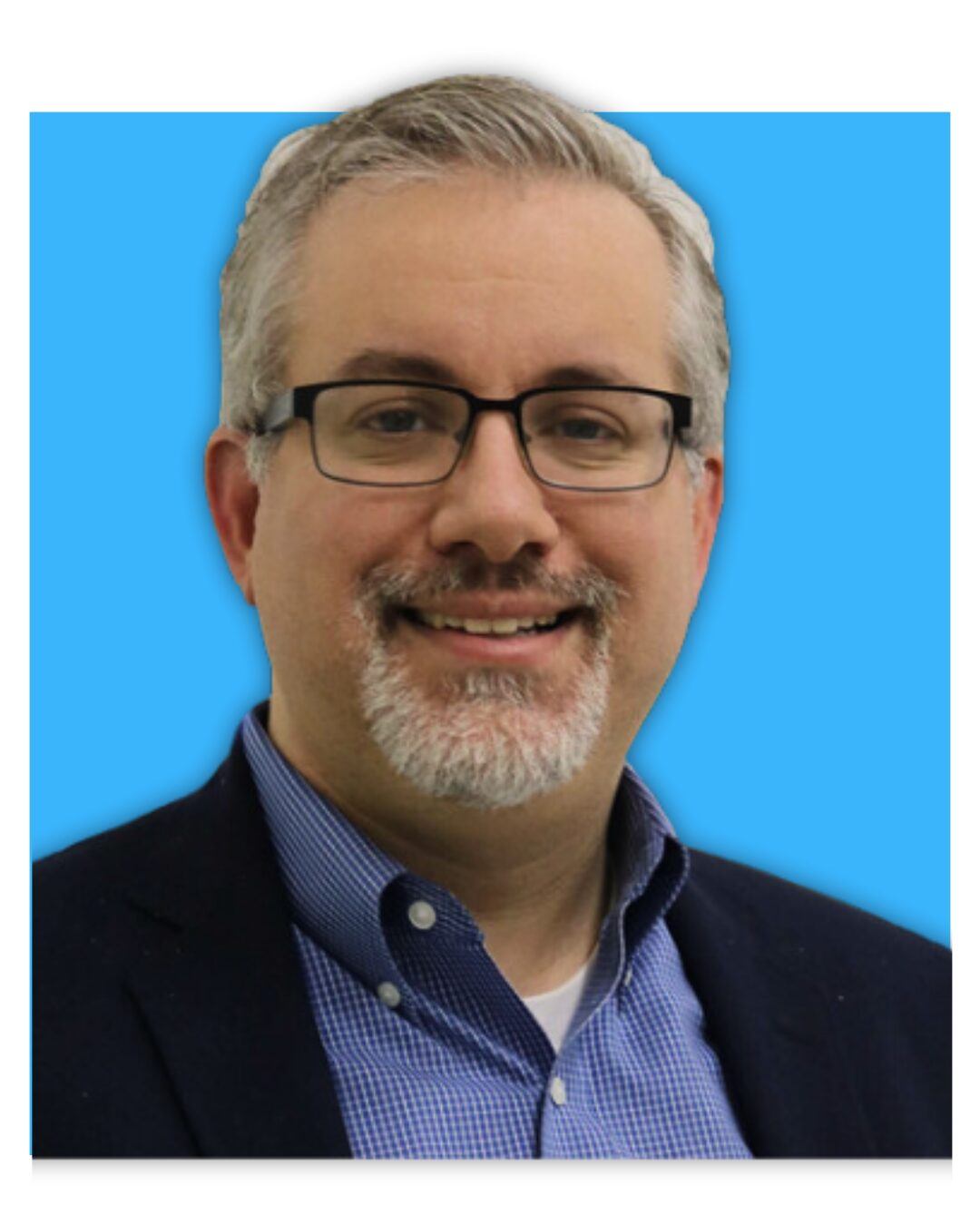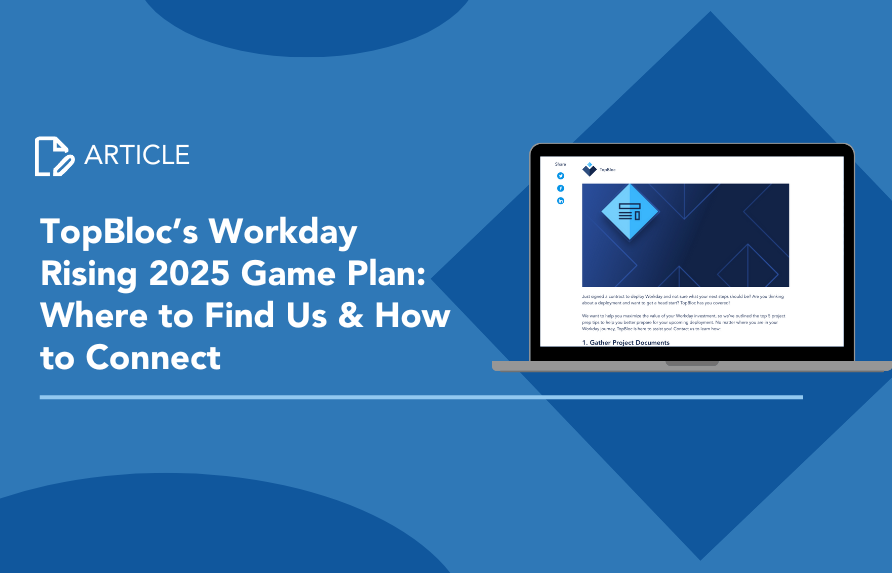
As CHROs navigate the accelerating move into the AI era, one question takes center stage: How do we build a workforce that’s ready for intelligent automation, meaningful data insights, and next‑generation employee experience? At TopBloc, our deep Workday expertise underscores that with the right human strategy and Workday foundation, HR leaders can confidently lead this transformation.
1. Understand Why AI Readiness Matters for HR
AI is transforming how employees work by enhancing routine HR tasks like data entry, benefits administration, and workforce planning in ways never thought possible before, all within Workday. Its not something you just turn on and go however. The real opportunity lies in focusing on the use cases that matter most—those that deliver the greatest impact for your organization. By targeting these high-value areas, HR and operational teams can free up time for strategic insight and creativity. They can also make faster, more informed decisions with real-time analytics and predictive modeling, and build a culture of continuous learning and adaptability.
2. Use Workday as a Strategic Foundation
Workday is more than an HRIS system. It is an AI-enabled platform built to power smarter decisions and faster processes across the employee lifecycle. Many of its core capabilities already use machine learning. Just as importantly, Workday understands innovation will come from many different directions and have built a platform strategy that accounts for it seamlessly integrating with third-party solutions, expanding what is possible for CHROs.
- Ensure a Stable, Aligned HCM Core: A clean, well-governed Workday Human Capital Management (HCM) deployment provides the “single source of truth” required for reliable AI outputs in areas like talent modeling, succession planning, and skills analysis.
- Leverage AI and Analytics Across the Platform: From intelligent document processing to skills inference, Workday delivers built-in AI for key processes. Pair that with tools like Prism Analytics and Adaptive Planning to uncover skills gaps, predict turnover, and identify workforce trends. Use these insights to design targeted, high-impact programs.
- Extend with Integrated Solutions: Workday’s open platform allows organizations to bring in best-fit third-party applications. This enables CHROs to layer additional innovation directly into their Workday environment and ensures the AI strategy can evolve alongside organizational needs.
3. Design a People-Centered AI Strategy
- Develop an AI‑Literate Culture: Start with mindset: AI is a co‑worker, not a competitor. Educate leaders on how AI complements human judgment. Encourage curiosity, experimentation, and cross-functional collaboration. AI augments your team, it doesn’t compete with them.
- Upskill and Reskill Strategically: Identify roles most impacted by AI and establish targeted upskilling plans: data-savvy HR business partners, digital wellness coaches, AI ethics stewards, and analytics translators. Provide structured programs—bootcamps, certifications, internal labs—supported by Workday learning modules.
- Embed Ethics and Transparent Governance: Employee trust hinges on transparent, explainable AI practices. With Workday’s audit and reporting tools, HR can ensure fair use of predictive analytics and guard against bias—especially in hiring, performance, and compensation.
- Enable Experimentation: Create a safe environment for teams to test AI-enabled tools, share findings, and iterate on solutions that deliver measurable value. Provide clear guidelines and support so innovation happens responsibly and can be scaled across the organization. You will find your team already knows the best places to use AI!
4. Align the Workday Journey with Change Management
Drawing on TopBloc’s Change Management best practices, embedding AI requires a clear change adoption strategy: Kick‑off communication to explain the strategic vision, goals, and benefits to each stakeholder group; Champions network to identify early adopters across departments; User training with role-specific guidance via Workday learning and hands-on demonstrations; and Feedback loops to collect user input and refine rollout plans.
5. Operationalize and Scale
Rather than limiting AI initiatives to rigid pilot programs, empower teams to experiment within clear governance frameworks. Start small in high-impact areas such as talent acquisition or learning, and give teams the tools to innovate, measure outcomes, and scale what works. Use Workday’s dashboards to track progress on process efficiency, skill development, and mobility, then iterate.
6. Measure Long‑Term Success
Track success through talent agility (redeployment, promotions, cross-functional movement), engagement and satisfaction (employee surveys and sentiment), process efficiency (percentage of HR transactions automated, cycle time improvements), and ethical compliance (fairness audits and anomaly detection).
Conclusion
By pairing Workday’s robust capabilities with a deliberate change-focused approach, CHROs can transform AI from a buzzword into a strategic advantage—empowering people, improving experiences, and driving sustainable business outcomes. At TopBloc, we’ve seen how this holistic model accelerates time-to-value and builds future-ready organizations.

Steve Thomas, VP of Customer Experience, Office of the CHRO
Steve Thomas is a transformation-focused HR executive with deep expertise in Workday. He has led enterprise deployments across global organizations, driving scalable HR operating models, workforce optimization, and AI-enabled innovation. Steve’s experience uniting HR, Finance, IT, and Operations ensures lasting adoption and results.


